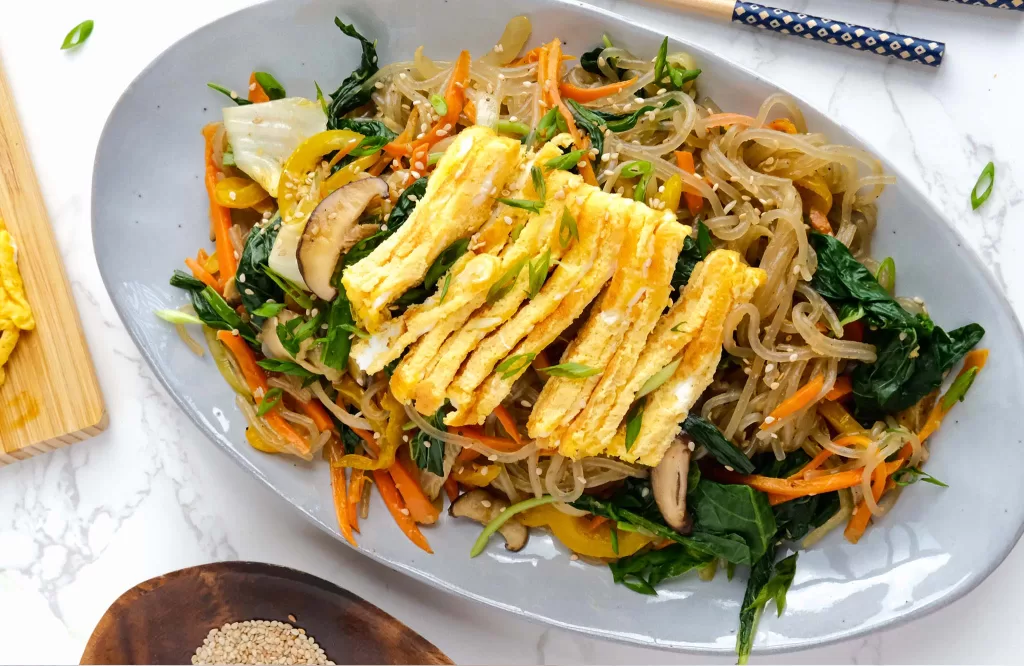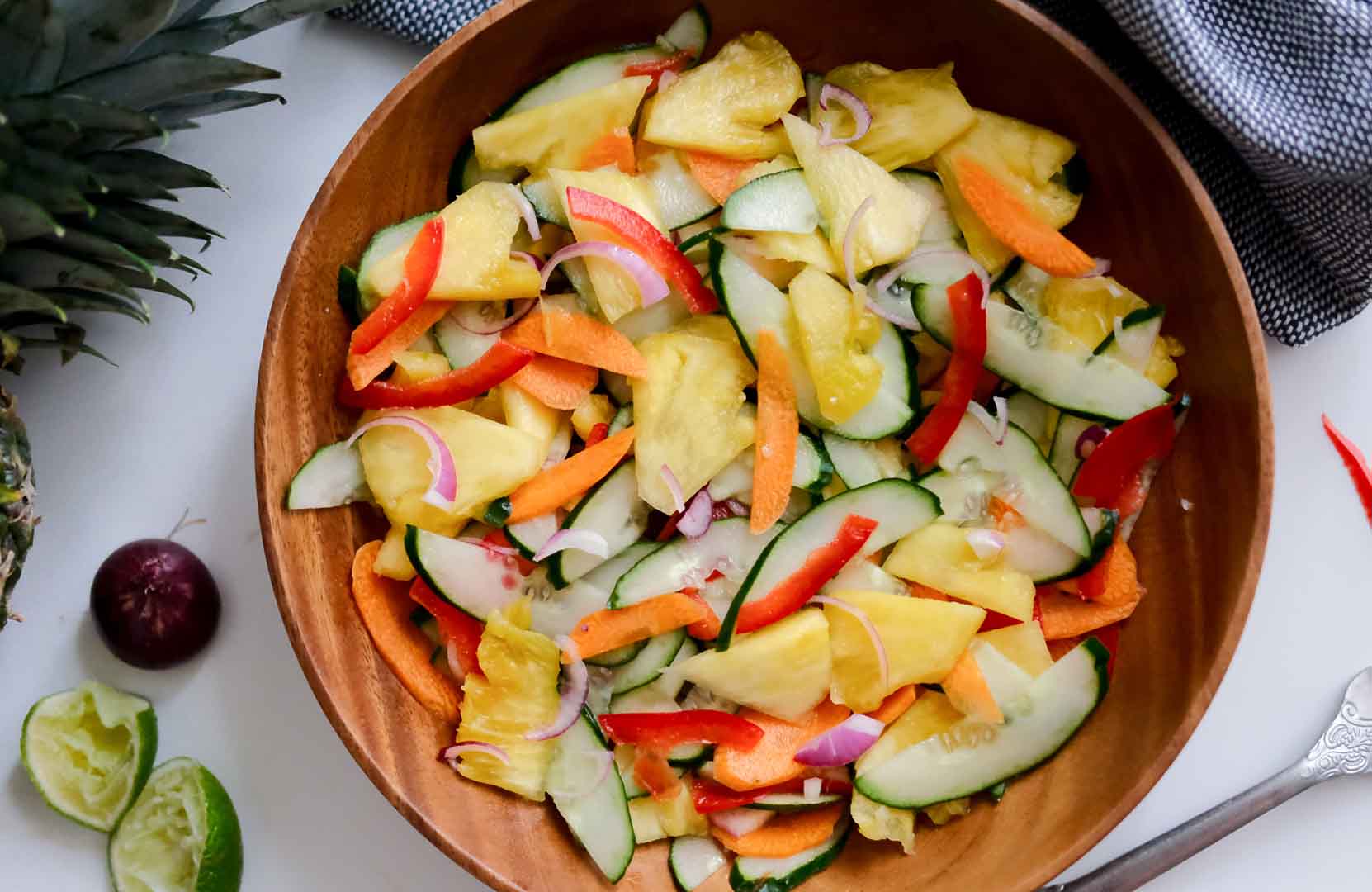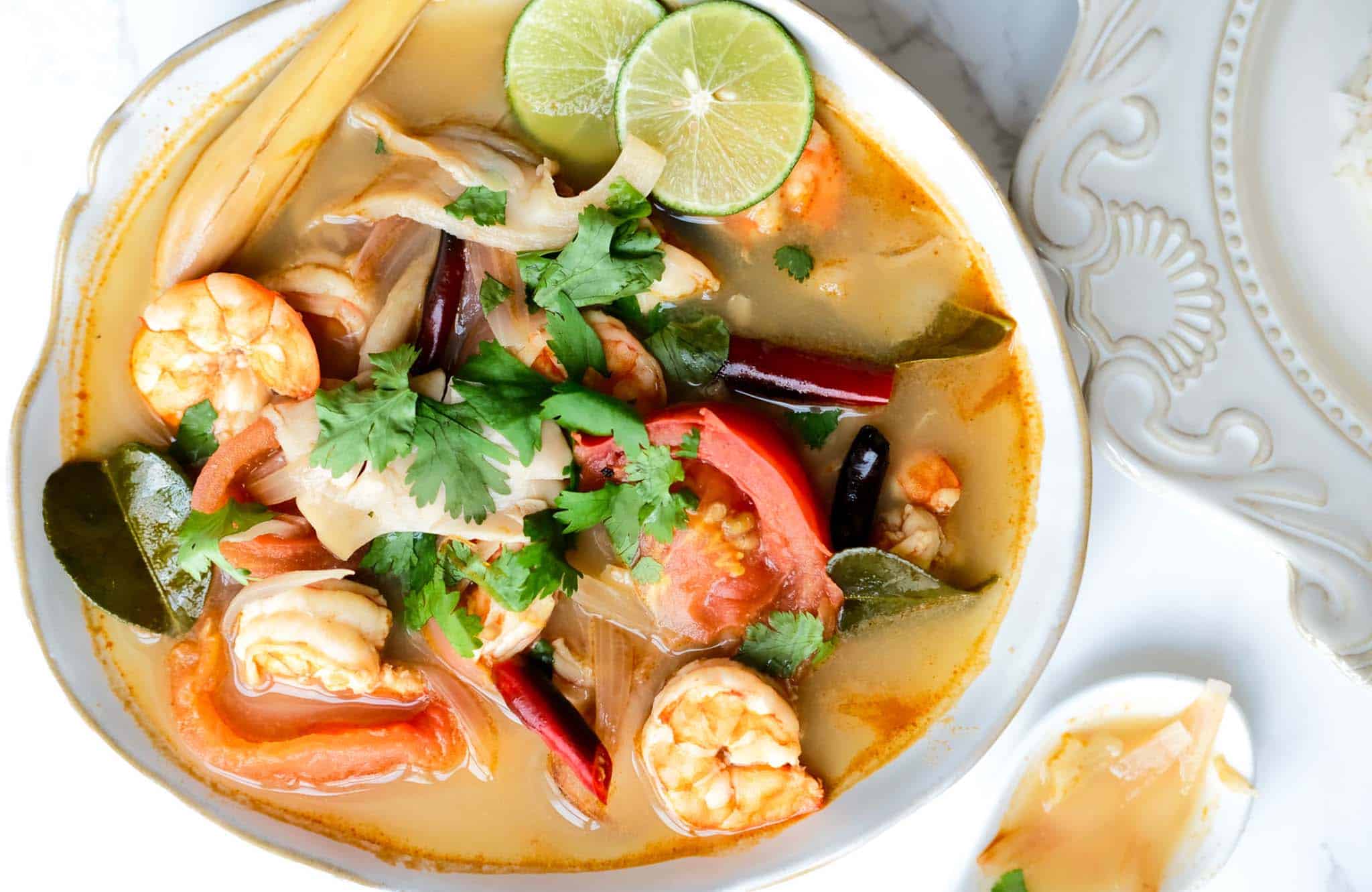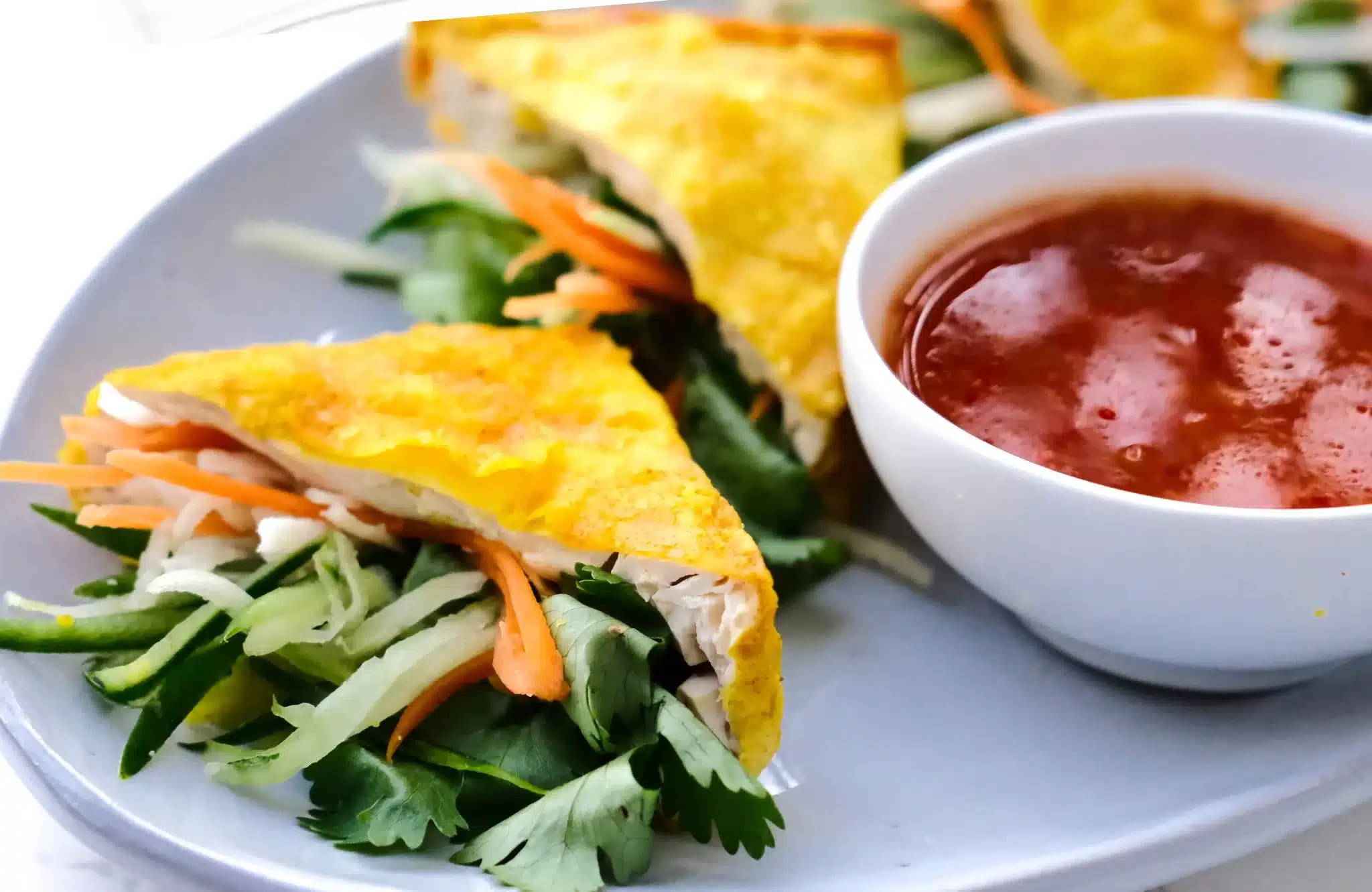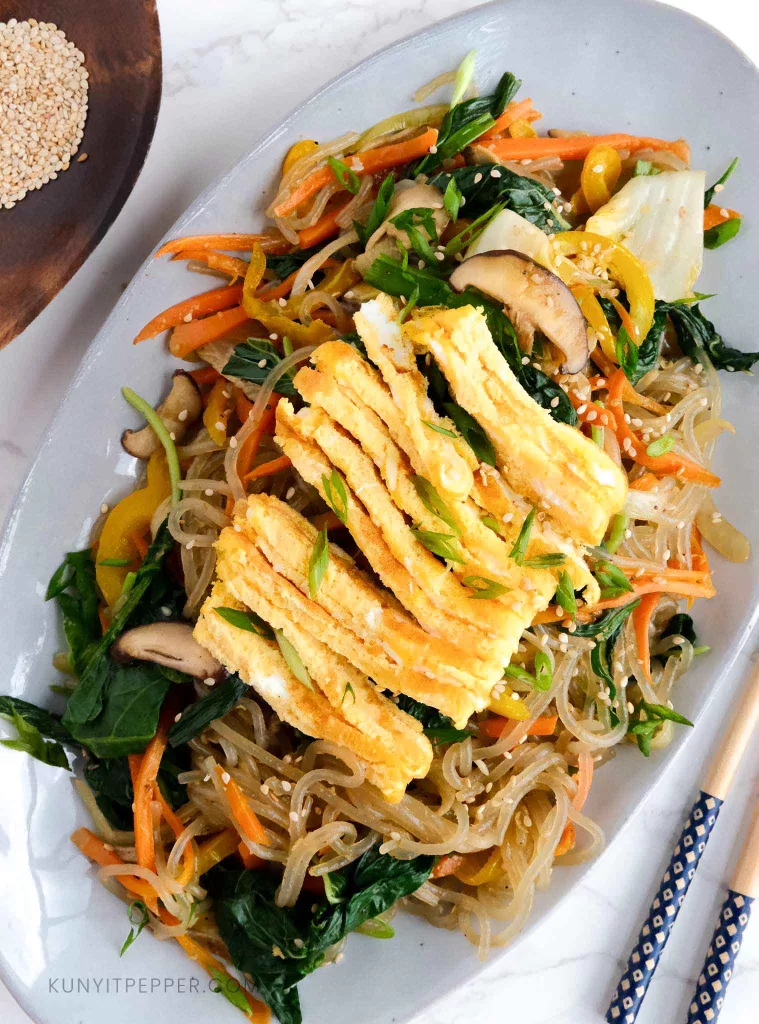
This Japchae, or Korean noodles, is my all-time favorite Korean food. Since I try to reduce eating outside and make food from home instead, I try to make it as healthy as possible without compromising on the taste.
Make Japchae with me!
Is Korean glass noodles healthy?
Japchae can be considered healthier. The vermicelli noodle used in Japchae is made of sweet potato starch and water, which is:
- Gluten-free
- Low glycemic index
- Low in fat
- Low in sodium
- Less likely to have chemical preservatives, coloring, and additive
- Low in calories.
Korean noodles or Japchae contain vegetables high in dietary fiber and vitamins.
The vegetables commonly used in Japchae are spinach, bell pepper, shitake mushroom, carrot, scallions, and cabbage, which are lightly cooked to preserve nutritional value.
It is a mixture of boiled noodles and lightly stir-fried mixed vegetables, served in a bowl with soy sauce and sesame oil for seasoning.
However, determining whether Japchae is healthy depends on the preparation and ingredients that go into the noodles.
Some Japchae may contain too much sodium, sugar, and oil, which decreases their nutritional value.
You can possibly be more likely to overeat carbs if the ratio is higher than the vegetables.
The best way to make sure Japchae is healthy is by preparing them yourself, so you can control the ingredients and the ratio of carbs and vegetables. Plus, it is easy to make!
This version of Japchae is:
- Low in sodium
- No refined white sugar
- Minimally cooked a minimal amount of sesame oil & olive oil.
- More vegetable ratio than noodles
- No red meat
- No soy sauce
- Low calorie
How does this Japchae noodle taste?
This version of Japchae is slightly sweet, nutty, and earthy, thanks to the sesame oil and mushrooms. Do expect some gelatinously chewy noodles that are lightly seasoned.
What is coconut aminos?
- Coconut amino is a dark-colored, thin condiment made of fermented coconut sap extract. Commonly used to substitute soy sauce, it is famous among gluten-intolerant people who are sensitive to wheat, soy, and gluten.
- Despite the name, this sauce tastes nothing like coconut, but it adds umami flavor to perfect Asian cooking.
- Compared to salty soy sauce, coconut aminos taste slightly sweeter than natural coconut sugar.
Is coconut aminos healthy?
- Compared to soy sauce, coconut aminos have a much lower sodium content.
- It has no preservatives or coloring (depending on the brand).
- According to this article, Coconut aminos contain amino acids that are beneficial to body muscle and hormones.
- Coconut sap has some anti-inflammatory properties. However, no evidence shows that coconut amino gives anti-inflammatory benefits.
Read more about coconut aminos from the dietition.
How to make healthy Korean noodles Japchae?
1. Wash and cut the vegetables and set them aside.
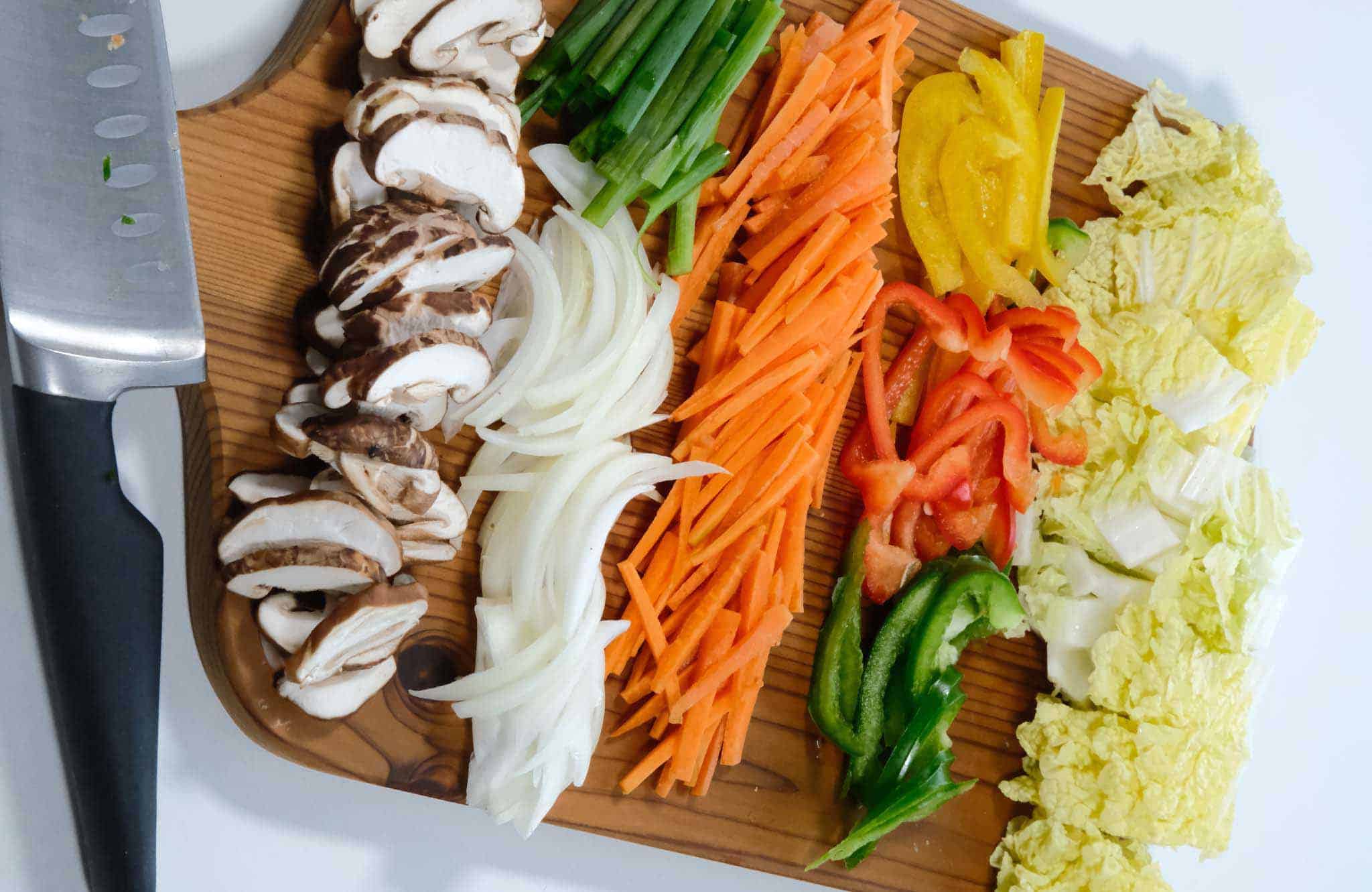
2. Mix the coconut aminos, honey, pure sesame oil, salt, pepper and sesame seeds in a bowl and set it aside. (Leave 1/4 of sesame seeds for garnish)
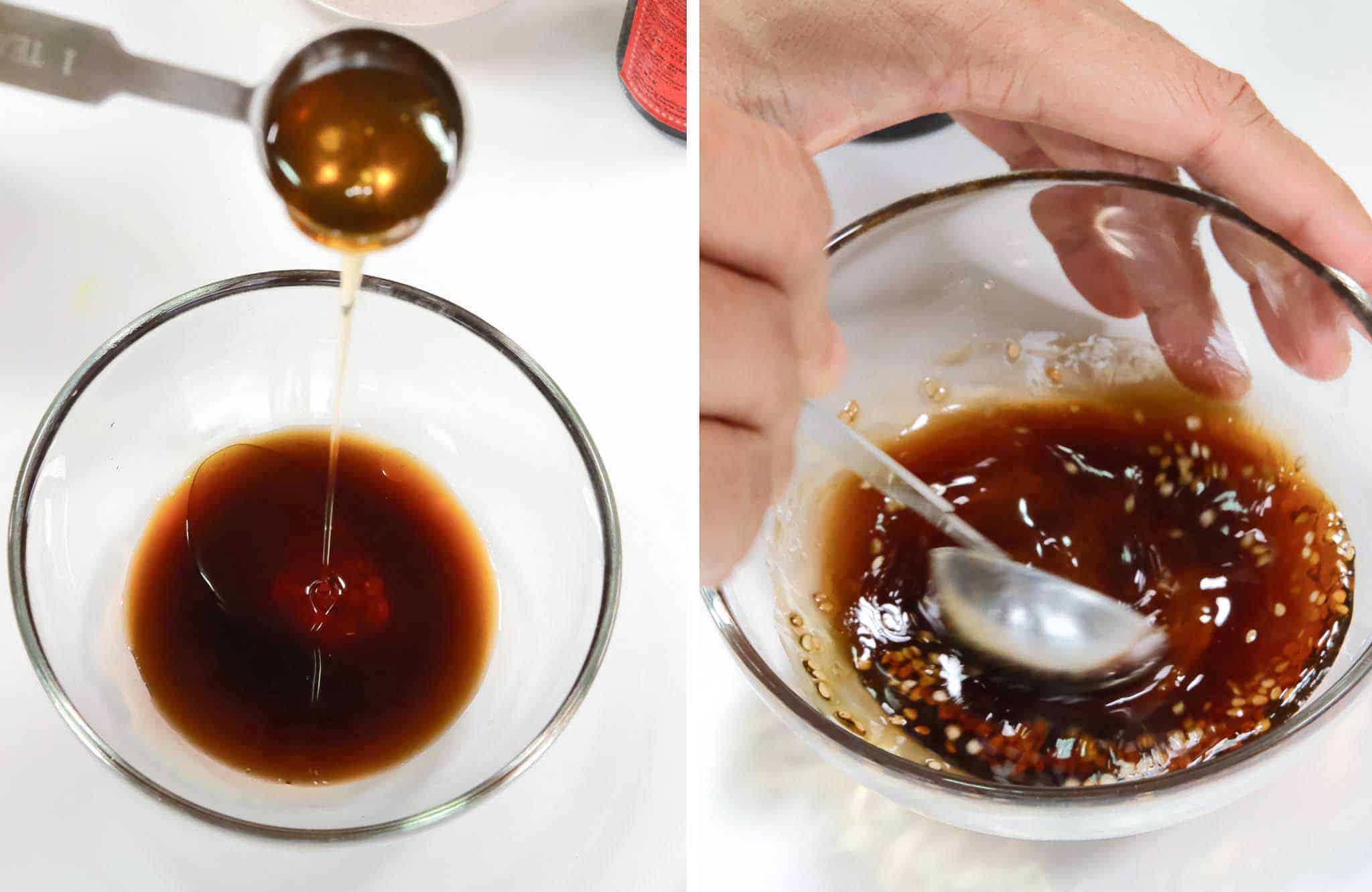
3. Boil the noodles according to the packaging instructions. Usually around 4-5 minutes. Once cooked, strain them and cut them short (optional).
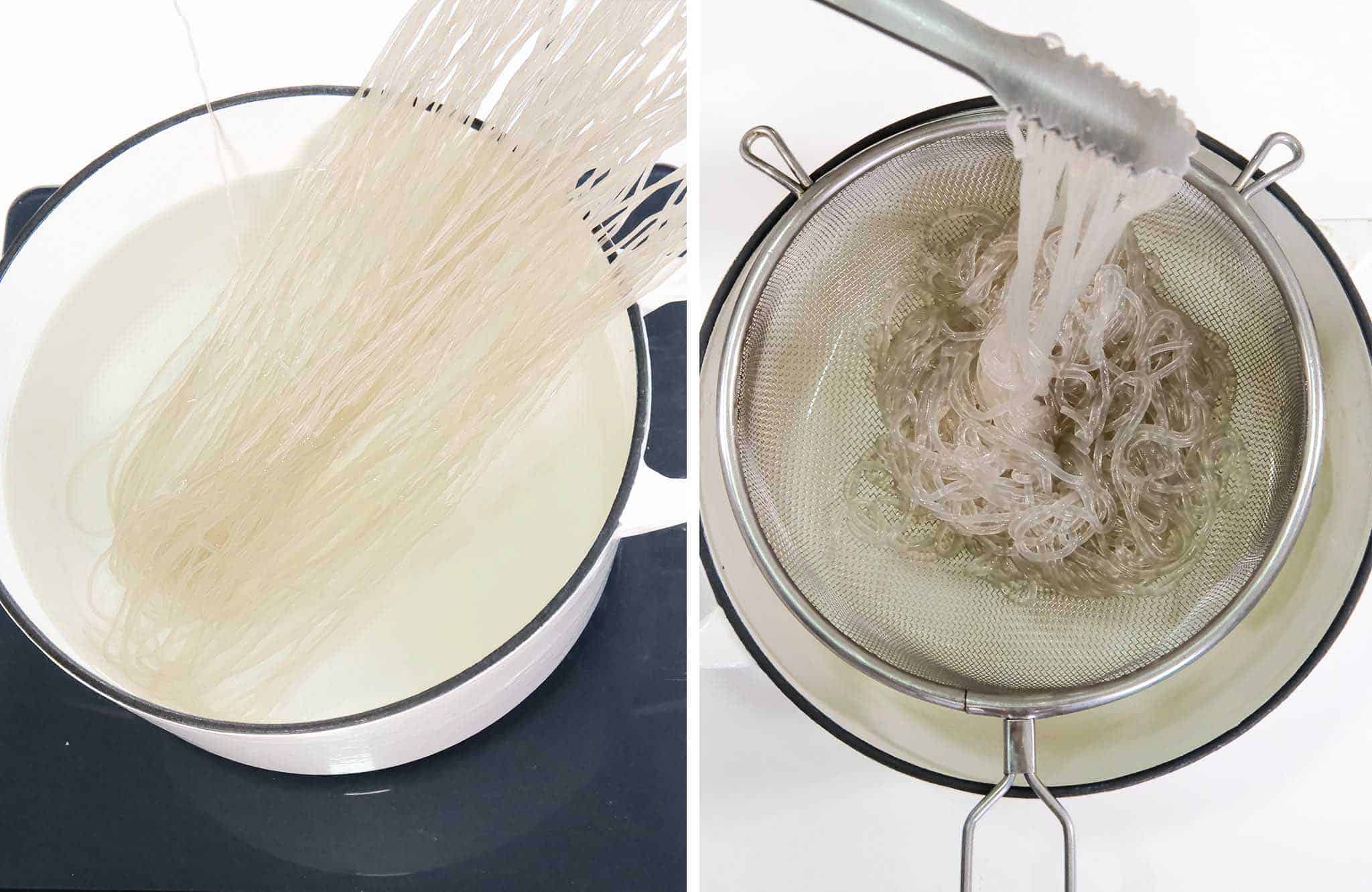
4. Transfer the noodles into a big bowl and pour the sauce into the noodles (leave 1/4 of the sauce for the vegetables), and with your hand (covered), mix the noodles and the sauce to coat.
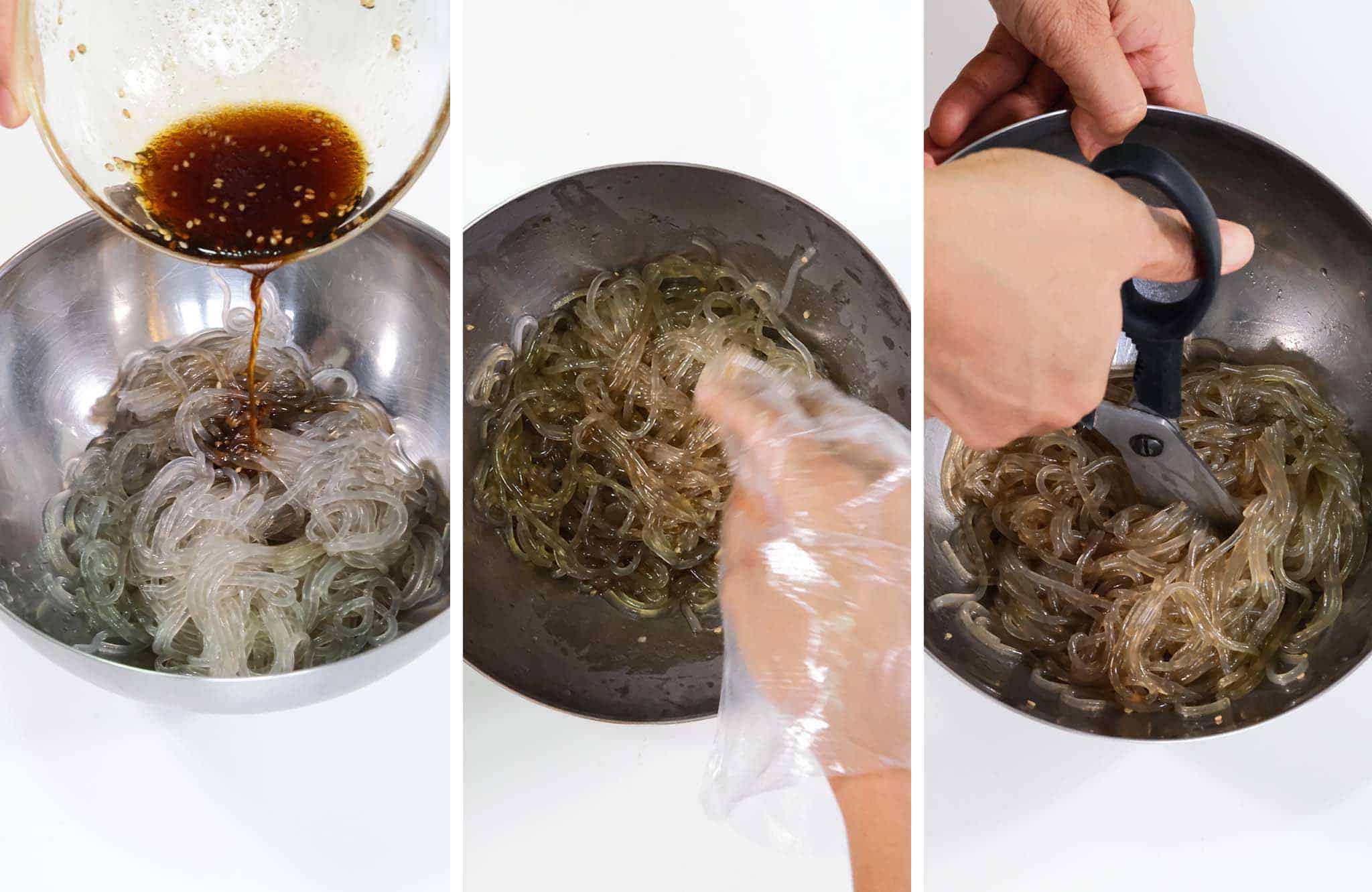
5. Boil water in a kettle, pour it into a spinach bowl, and let it sit for 40sec. Drain and submerge the spinach into cold water to stop the cooking. Squeeze the spinach to drain the excess water and transfer them to the noodle bowl.
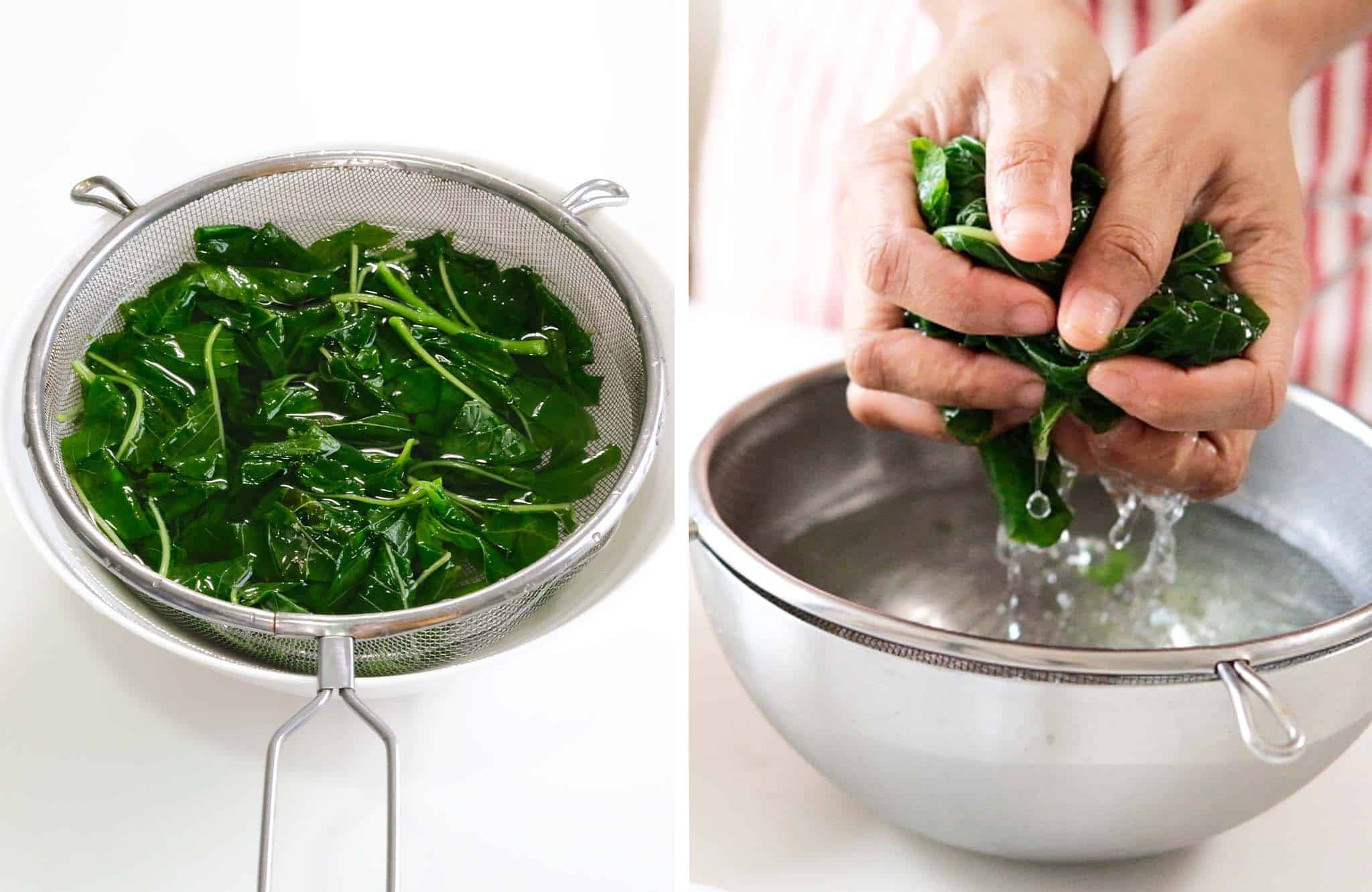
6. Heat a big pan or wok under medium heat. Add pure sesame oil and all the cut vegetables (including grated garlic) except for spinach. Add the remaining sauce to the vegetables and stir for 5 minutes.
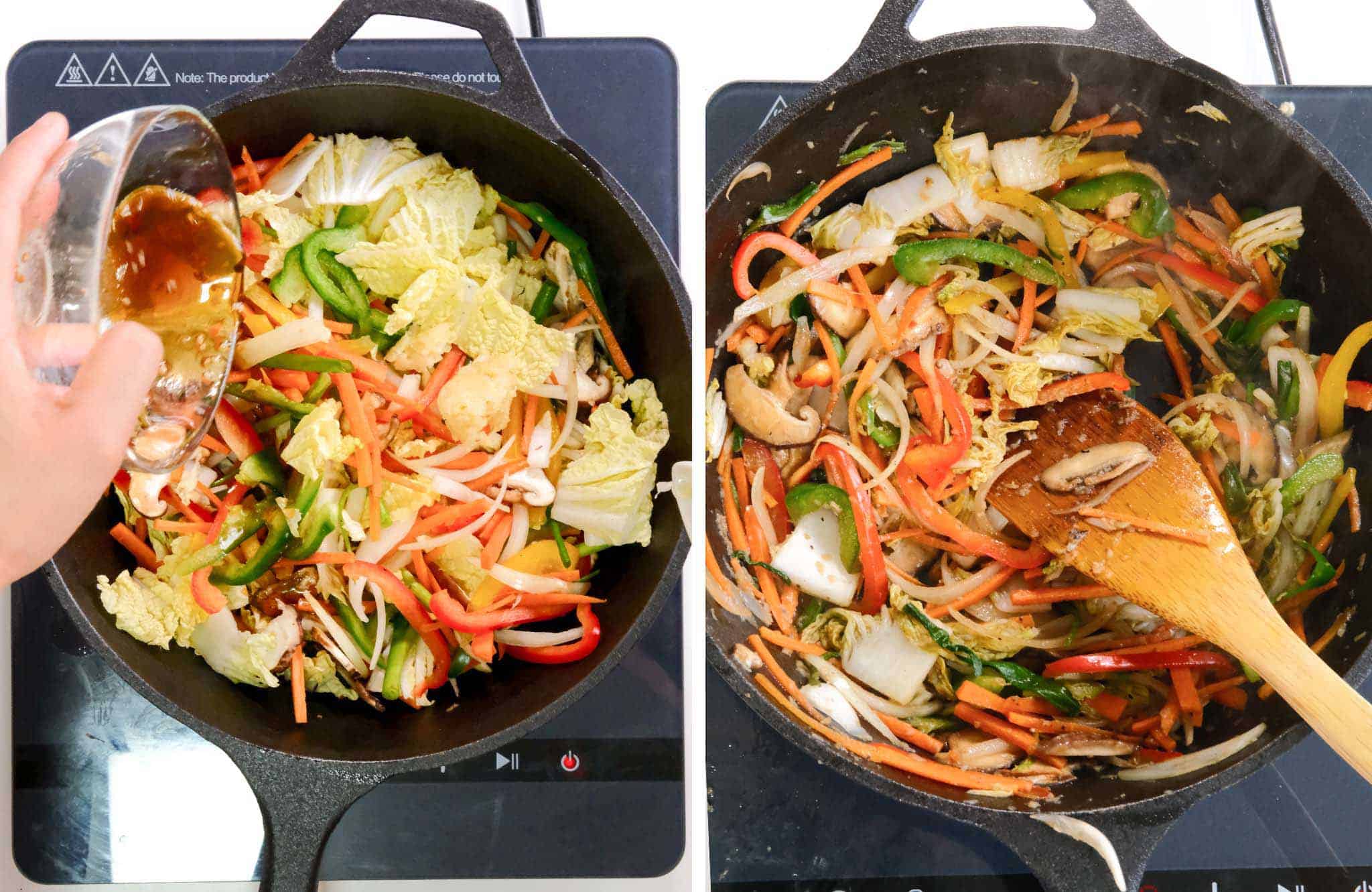
7. Transfer the vegetables into the noodle bowls, let them slightly cool and mixed them with hand.

8. For the topping, crack the eggs, season with salt, whisk them and cook them on a lightly greased pan under medium heat.
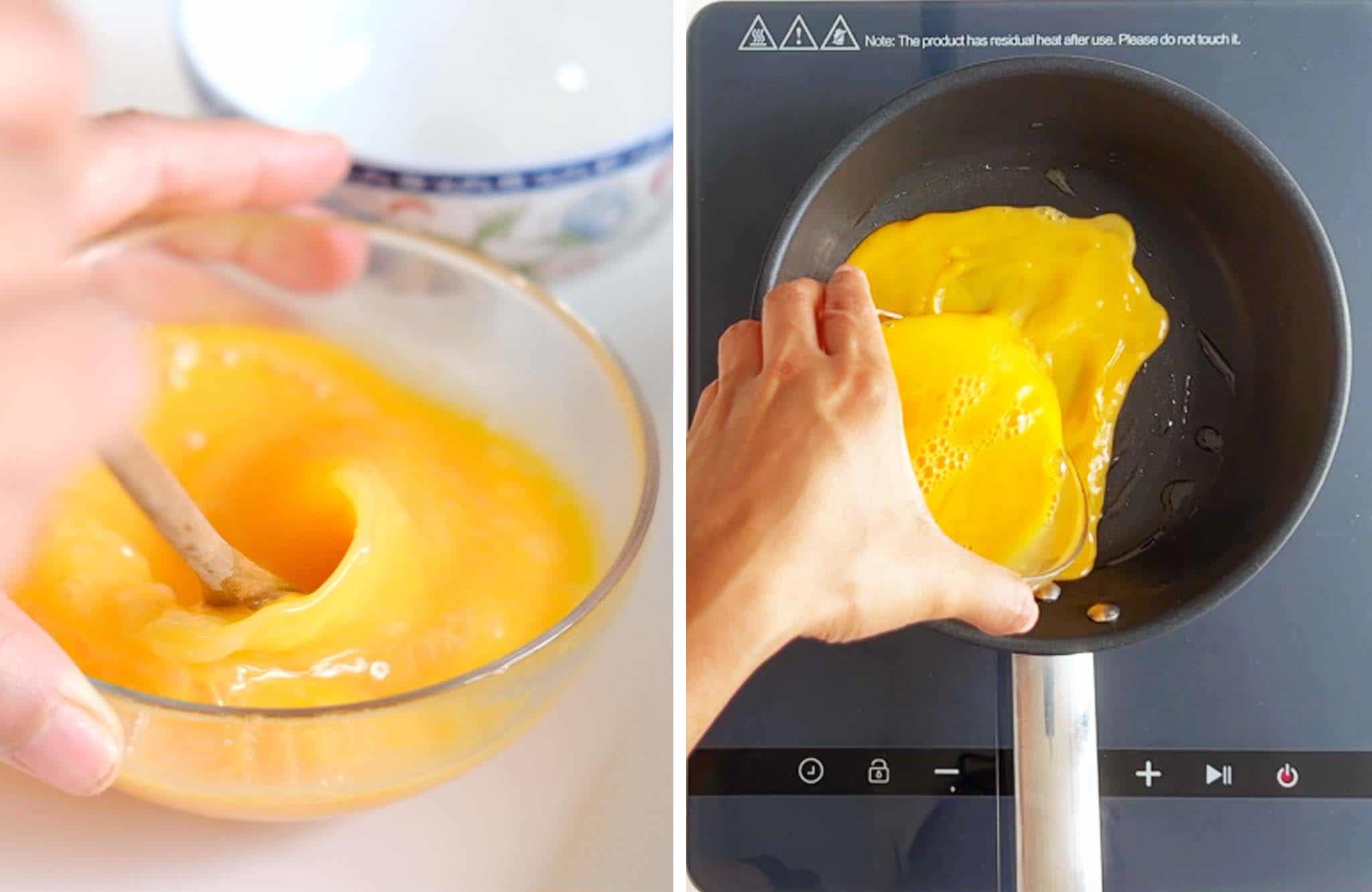
9. Once the bottom turned golden, roll the eggs, transfer to a cutting board and slice them thin.
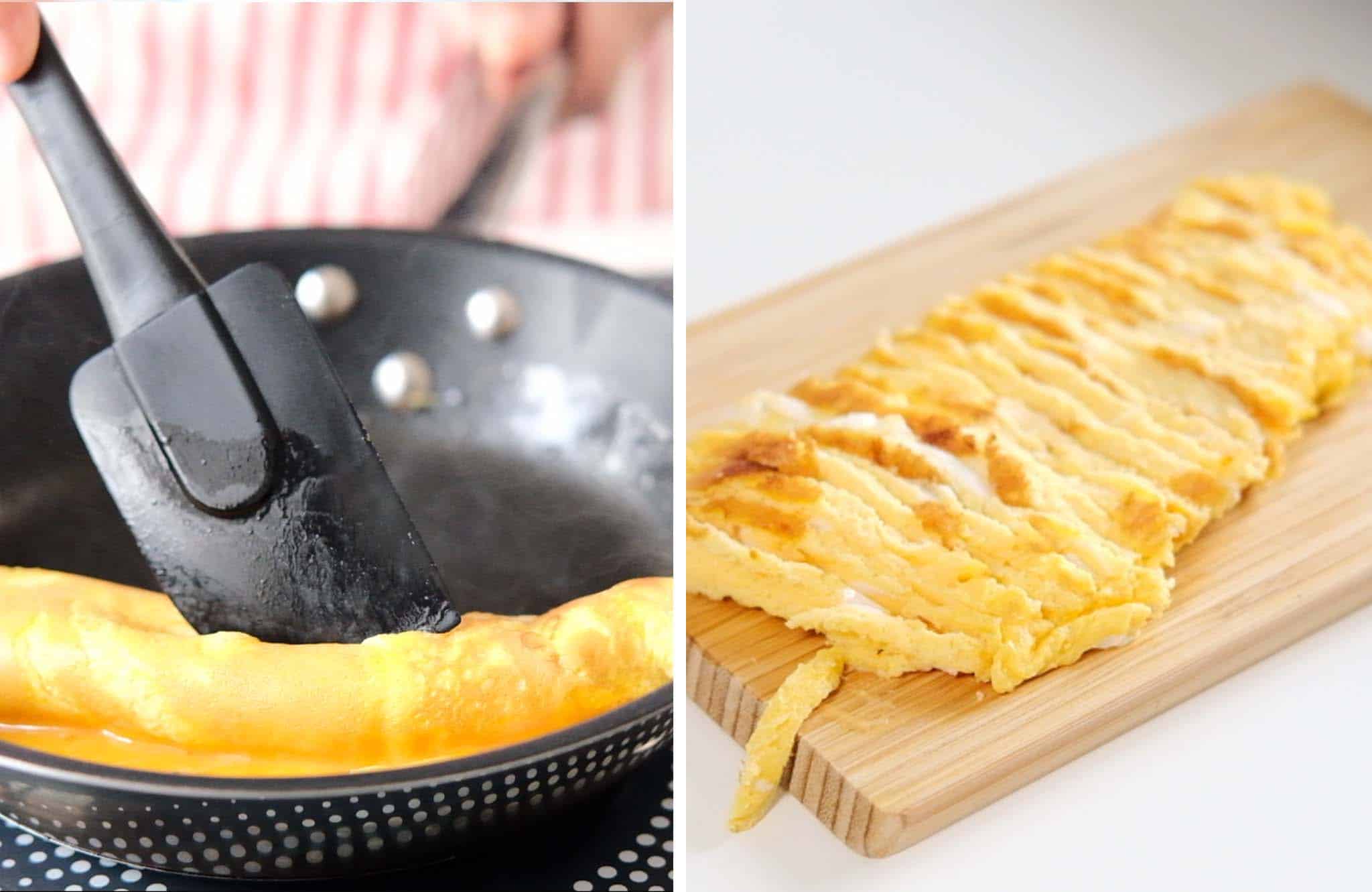
10. Top them on the noodles and garnish with sesame seeds and scallions
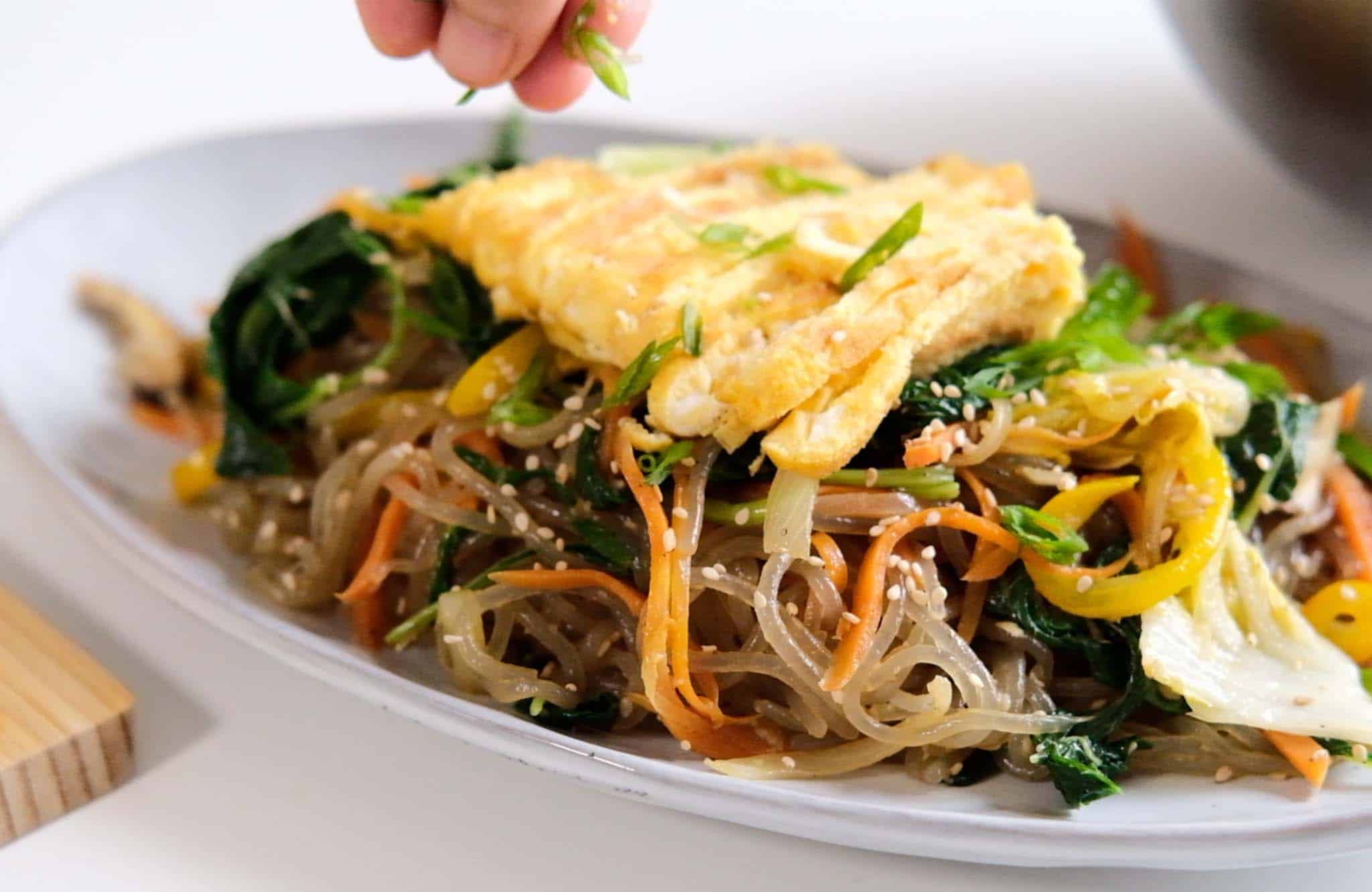
Korean japchae can be healthy depending on the preparation and what goes into the noodles. However, it is always best to consume sodium, sugar, and noodles in as minimal amounts as possible and eat more whole foods like fresh vegetables. After all, a balanced diet is more sustainable than a strict diet.
- Liquid Aminos
- Low-sodium soy sauce
- Tamari
You may also like
- Korean Multigrain Rice in a rice cooker – Japbgokbap
- Lemongrass Chicken Noodle Salad
- Oven-Baked Spring Rolls
Healthy Korean Noodles | Japchae
4
servings15
minutes10
minutes25
minutesIngredients
1 Carrot
100g Spinach
100g Bell pepper
70g Shitake mushroom
100g Chinese Cabbage
3 stalks scallions
3 cloves of garlic
3 tbsp coconut amino
2 tbsp honey
2 tbsp pure sesame oil
1/4 tsp ground pepper
1 tbsp of sesame seeds
1 tsp of salt
150g Korean sweet potato vermicelli
Directions
- Wash and cut the vegetables and set them aside.
- Mix the coconut aminos, honey, pure sesame oil, salt, pepper, and sesame seeds in a bowl and set it aside. (Leave 1/4 of sesame seeds for garnish)
- Boil the noodles according to the packaging instructions. Usually around 4-5 minutes. Once cooked, strain them and cut them short (optional).
- Transfer the noodles to a big bowl, pour the sauce over them (leaving 1/4 of the sauce for the vegetables), and mix the noodles and the sauce to coat with.
- Boil water in a kettle, pour it into a spinach bowl, and let it sit for 40 seconds. Drain and submerge the spinach in cold water to stop the cooking. Squeeze the spinach to drain the excess water and transfer it to the noodle bowl.
- Heat a big pan or wok under medium heat. Add pure sesame oil and all the cut vegetables (including grated garlic) except for spinach. Add the remaining sauce to the vegetables and stir for 5 minutes.
- Transfer the vegetables to the noodle bowls, let them slightly cool, and mix them thoroughly.
- For the topping, crack the eggs, season with salt, whisk them, and cook them in a lightly greased pan over medium heat.
- Once the bottom turns golden, roll the egg, transfer it to a cutting board, and slice it thin.
- Top them on the noodles and garnish with sesame seeds and scallions
Recipe Video
🥣 Did you try this recipe? Let me know your thoughts in the comment below.


